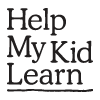What to do with this activity?
When you are on a longer journey by road, encourage your child to look around them and be aware of their surroundings. You might keep them busy with games of "I Spy" or working out which county a car comes from according to its registration number plate, or spotting different kinds and colours of vehicles.
Also, have a look out for road signs and let them learn what the common ones mean. Spot the ones that are in Irish like "Géill Slí" which is the same as "Yield". Notice how some signs are round, some are triangular and others are rectangles, and that they come in different colours.
Have a look at these images of road signs that show the rules that apply on the road, and these signs that warn you what is coming up ahead, both from the Driving Tips website. If your child likes to pretend to drive, talk with them about what the signs are telling them as they "drive" along.
This is not necessary information for your child to learn. It's about spotting interesting things around them, finding out how the world works, and having fun together.
-
Why am I doing this?
The written word is everywhere and by pointing out words around you everyday, your child will realise the usefulness of reading and how it brings information and knowledge of the wider world into your lives.
Reading together shows your child that you think reading is important. It helps your child to link the words on the page to how they are spoken and to begin to recognise words.
-
How can I do more?
Encourage your child to read by giving them books or information about what they are interested in, for example, if they are interested in cars, give them books about cars – it’s a great motivator. Use comics, magazines and newspapers to provide lots of new words and facts. Your child can use the pictures for information about the words they are reading.
Read longer books to your child. This will help with memory.
You could do ‘paired reading’ – your child chooses a book or comic to read.
- At first, both of you read aloud together. When the child is ready, they carry on reading alone.
- If they don’t know a word, you say it for them and both of you continue to read together until they are ready to read alone again.
- No pressure is made to get them to read by themselves. They only do it when they are ready. This is useful with older children when they find text books difficult.Your child might like to practise their reading skills by reading to younger children.
Discuss with your child’s teacher if they are having difficulty reading.
Rate this activity
![]()
![]()
![]()
![]()
![]()
Based on 1 review
How would you rate it?
1 = Poor, 5 = Great.



